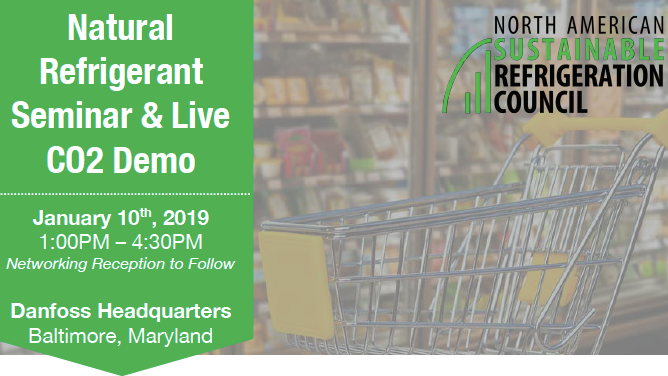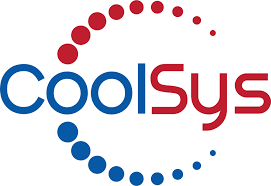For a limited time, access free on-demand presentations highlighting the latest natural refrigerant technologies for supermarket and food retail applications! The North American Sustainable Refrigeration Council (NASRC) - a 501c3 nonprofit collaborating with the supermarket industry to advance the adoption of natural refrigerants - has launched a first-of-its-kind library of on-demand presentations showcasing natural refrigerant technology solutions for both new and existing supermarket facilities.
Due to the high global warming potential (GWP) of traditional hydrofluorocarbon refrigerants (HFCs), supermarkets are facing growing regulatory pressures to transition to low-GWP refrigerant technologies.
Natural refrigerants, including ammonia, hydrocarbons, and carbon dioxide, are simultaneously the most climate-friendly solution and the most effective way for supermarkets to achieve regulatory compliance. But high upfront costs and other market barriers have prevented their widespread adoption, contributing to uncertainty around the low-GWP technologies that will best meet the needs of each supermarket.
“We heard from our retailer members that there was a lack of information on viable natural refrigerant technology options,” said Danielle Wright, NASRC executive director. “Retailers need to fully understand the benefits and trade-offs of each technology option in order to make sound decisions and effectively navigate increasing refrigerant regulations.”
To address this challenge, NASRC hosted a webinar series in which NASRC members presented on the latest natural refrigerant technology offerings. Presentations focused on options for existing stores, which are especially challenging as they require a costly full or partial system replacement to allow for the use of natural refrigerants. For a limited time, NASRC has made all webinar recordings available on-demand for free in a new Natural Refrigerant Technology Library.
“Our goal with this series was to help supermarkets and their partners learn about natural refrigerant technologies that meet their needs in both new and existing stores,” said Wright. “This information is also critical for policymakers and utilities to make informed decisions that will shape energy and refrigerant regulations.”
View the recordings now to learn about the latest natural refrigerant technology solutions for supermarkets.
NASRC is supported by over 24,000 US supermarket locations and more than 130 organizations representing all sectors of the commercial refrigeration industry. Learn more at their website here: www.nasrc.org.











